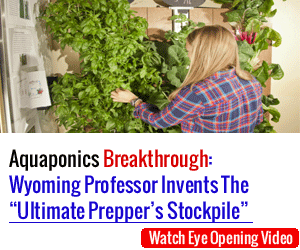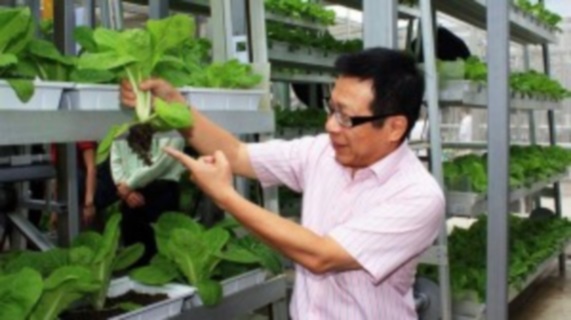Imagine walking into a high rise building only to find out it was actually a vertical farm. As odd as this sounds, this type of building is popping up in different areas of the world as the idea promises new, environmentally friendly and rapid ways to feed growing populations.
The first commercial vertical farm was built in Singapore by Jack Ng who is an entrepreneur looking to supply food to Singapore’s densely populated city without having to buy a lot of highly priced land around the city. His vertical farm method is energy efficient, simple and mixes some ancient practices with new ones. The tower is modern and clear, so it looks great and allows sunlight into the the building for the plants. The produce grown in the building is sold under the name SkyGreens. You can find out more about how this vertical farm works in the video below.
In March of this year the largest vertical farm is set to open up in Scranton, New York. The farm was built by Green Spirit Farms andVertical Farms Sprouting Up All Over The World Could Bring Food Local only utilizes about 3.25 hectares of land (about 8 acres.) Considering the average farm is about 300 acres, using only a fraction of the land to provide food to locals indicates the efficiency of the farming method. This farm will use plant racks that utilize soil-free hydroponics systems and will be lit by LEDs that mimic sunlight. The entire system of rotation can be monitored and adjusted by software using something even as simple as a smartphone. This new farm is set to grow 14 lettuce crops each year, spinach, kale, tomatoes, peppers, basil and strawberries. The projected output is said to be about 10 times greater than the first vertical farm Green Spirit Farms built in 2011.
Although sunlight is used as much as possible in vertical farms, some are using windowless operations and some with lights like LEDs that re-create sunlight. This might make us question whether or not the plants will be getting the right type of light to grow properly. Since nutrients mainly come from soil or hydroponics systems, the only question is whether or not using artificial light instead of sunlight provides an equal product. Current research suggests that grow lights can provide plants with light spectrums they need and are useful to harden seedlings if the weather is still harsh. But, researchers seem to agree that growing plants with real sunlight is much better than using artificial light.
This idea certainly can have useful implications, but personally I feel that each farm should use as much sunlight much like the Singapore design did. Innovation is always a positive step but naturally I feel some things are meant to contain as many natural elements as possible.
Considering much of the worlds food is flown or driven around a great deal before it reaches its destination, these vertical farming practices can provide food to people locally. This is important because as food is picked from the ground, plant or tree, it begins to lose its nutrients over time. The faster food gets to your dinner plate, the more nutritious it is. Not only that, but certain produce items are picked when they aren’t quite ripe so that they can be ripe when they get to their destination. By nature, this also means the food isn’t as nutritious.
Growing locally is certainly the most ideal way to feed the world. While not all climates can grow every type of produce, we also need to remember that we can get more in tune with eating fruits and vegetables that are in season versus relying on eating from other places around the world. Vertical farms might be one possible solution that can help extend the range of foods that can be grown in certain areas, as well as create unlimited growing seasons for certain foods.
Backyard Innovator (A Self Sustaining Source Of Fresh Meat,Vegetables And Clean Drinking Water)
Blackout USA (EMP survival and preparedness)
Conquering the coming collapse (Financial advice and preparedness )
Liberty Generator (Build and make your own energy source)
Backyard Liberty (Easy and cheap DIY Aquaponic system to grow your organic and living food bank)
Bullet Proof Home (A Prepper’s Guide in Safeguarding a Home )
Family Self Defense (Best Self Defense Strategies For You And Your Family)
Sold Out After Crisis (Best 37 Items To Hoard For A Long Term Crisis)
SOURCE : www.collective-evolution.com


